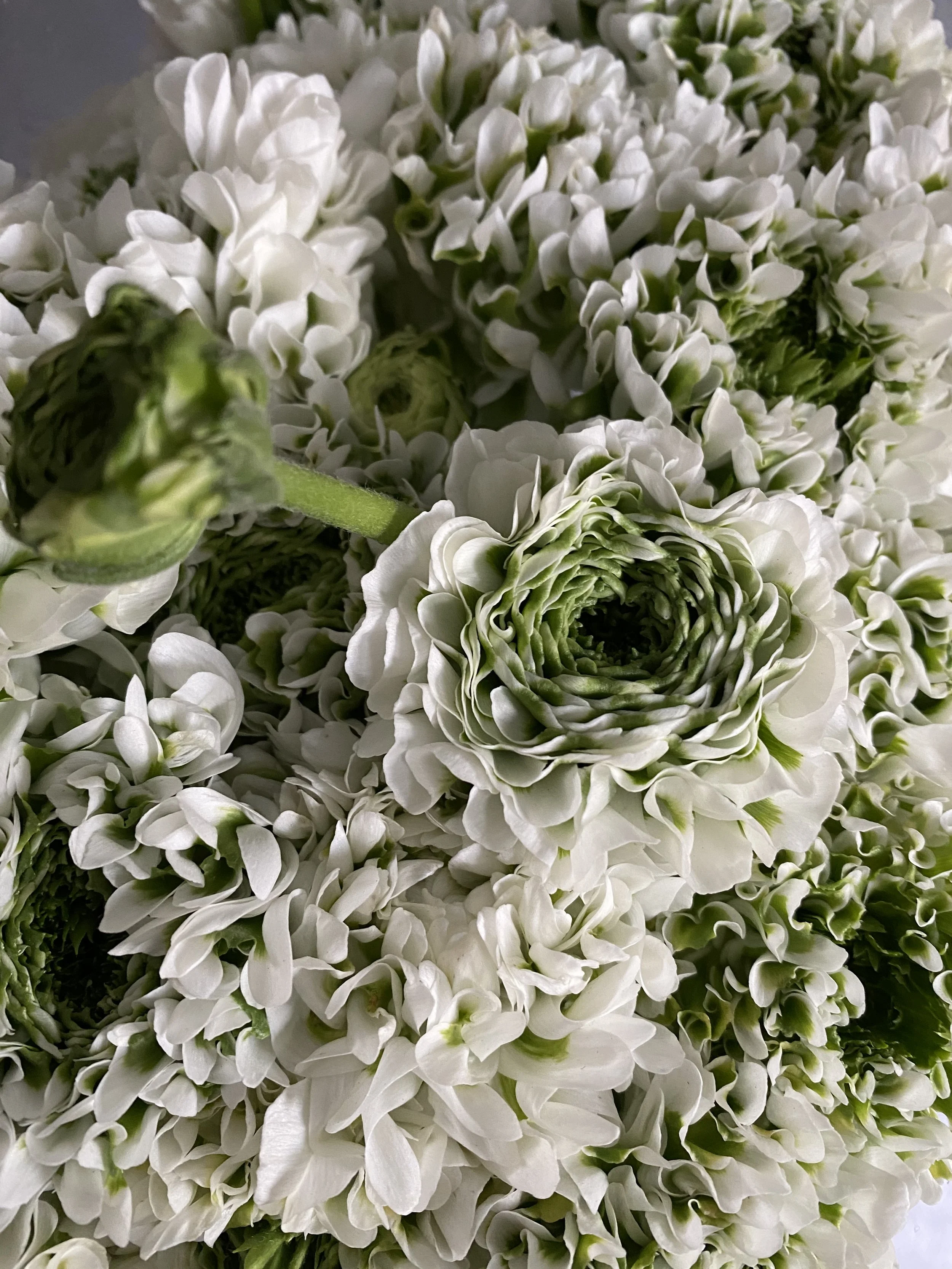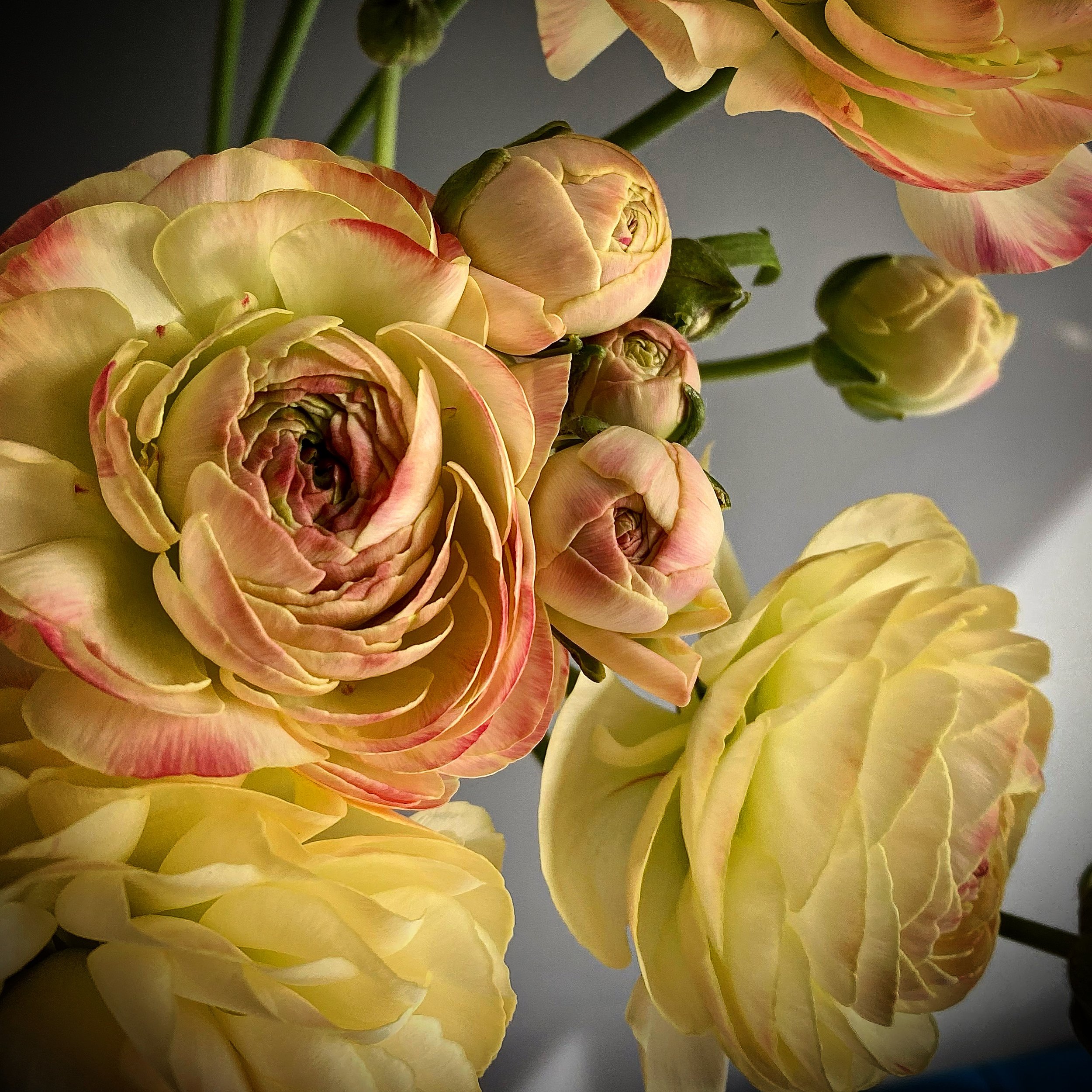Ranunculus Love
Ranunculus. Those fabulously ruffled florals which are synonymous with spring, have a name which means Little Frog in Latin, perhaps due to their preference for being near water. Apparently they symbolise charm, and I’m not inclined to argue as they are a truly beautiful and charming flower.
My favourite Ranunculus to work with are Pompom and Cloni. Pompom Ranunculus are a delicious combination of two colours such as white and green (Igloo), or white and pink (Fantastico). There is a particularly bold variety called Garfield, which is a deep orange and green mix, presumably named after the famously fat and orange cat! Pompom are lighter in weight than the Cloni, and I often use them as a secondary bloom, although they are more than worthy of being the star attraction.
Cloni Ranunculus are unbelievably ruffled. Sometimes it’s hard to comprehend that something so beautiful can exist. Also available in a range of colours, they tend to inhabit the pastel arena. The most fabulous of all (in my opinion) are Hanoi, which have a beautifully elegant softness and encapsulate purity and romance. Whereas Pompom hover around the 35g per stem mark, Hanoi are around 60g, with some reaching 80g per stem. They rival any rose and are truly voluminous, with petals cascading down in an unapologetic fashion.
Another favourite are Butterfly Ranunculus, which resemble their Buttercup brethren with their branching stems and abundance of buds. The variety I seek out the most is Ariadne, which has a light creamy pinkness, and lime yellow buds. They are satisfyingly long lasting, with the majority of buds opening over the course of two weeks. The fuller blooms gently droop and bounce, whereas the budding and branching stems offer some structure and form.
Ranunculus stems are fairly robust, but that doesn’t mean you should be heavy handed. Despite their firmness they are susceptible to bruising, and require a purposeful yet gentle touch. As with all my arrangements, I refresh the water every two to three days, and re-cut the stems in order to maximise their vase life. Ranunculus do last very well, with many withstanding up to two weeks and beyond. I will admit I accidentally left some out of water overnight once, only to be presented by some very sad and flaccid faces in the morning. Fortunately a generous recut followed by a long drink perked them right up, and no one knew any different.
Occasionally a stem will collapse under the weight of the bloom, so I simply snip just above the bend, and display in a bud vase or vintage bottle which has a tall slim neck. Offering support to the bloom whilst keeping its underside away from direct contact with the water. You can float them in a teacup, but don’t expect more than a day of enjoyment. I have also experimented with Ranunculus blooms left out of water, used as part of a wider tablescape. They held up remarkably well.
Working equally as single stems in bud vases as en masse in a statement vase, Ranunculus cannot fail to impress. Occasionally you receive a stem where the bloom is facing completely forwards, rather than centrally. I feel it’s important to work with these little quirks, and Ranunculus like this are best placed on the rim of the vase, so the bloom is supported and therefore easier to incorporate into the arrangement as a whole. Ranunculus buds add another dimension whether they are left long or cut short, nestled within the rest of the blooms. Remember that they will continue to open, so give them some space to breathe, but overall just enjoy them and celebrate their existence.





